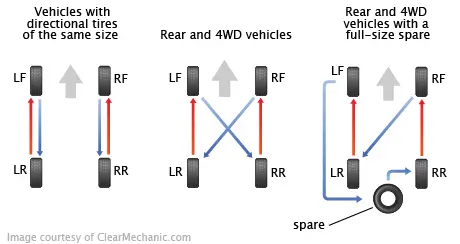Introduction
Tire rotation gives a boost to longevity and even wear of tires in the maintenance aspect of vehicles. But do Honda vehicles have any specific requirements? Well, yes. Tire-rotation pattern does make a difference in performance, safety, and fuel economy. This article will explore why tire rotation is essential for Honda vehicles, which rotation patterns to follow, and how improper rotation can affect your car’s performance.
Why Does Tire Rotation Matter?
Due to differences in weight distribution, steering mechanics, and braking force, tires do not wear evenly. The front tires tend to suffer more stress than the rear tires, especially in the case of front-wheel-drive Hondas. Regular tire rotation assists in equalizing wear, thus extending the life of all four tires.
Some of the Advantages of Rotating Tires:
Systematic tire rotation extends the life of tires through belt tension, so you do not have to replace a set of four tires prematurely.
There are positively improved handling capabilities for smooth rides.
Uneven wear of tires causes loss of traction and stability, especially in rain and snow.
Tires properly rotated will align to relieve any rolling resistance, with positive gas mileage benefits.
Understanding Honda’s Recommended Tire Rotation Patterns
Honda, like any other automaker, recommends certain patterns of tire rotation according to the particular type of drive and tires. Suitable ones vary with respect to whether your Honda is of FWD, RWD, AWD, or directional/staggered tires types.
Front-Wheel Drive (FWD)
Most Honda models, including Civic, Accord, and CR-V, are the front-wheel drives. Due to this, the time it takes to wear down front tires is reduced since they are responsible for most of the braking and acceleration forces.
Recommended Rotation Pattern:
Move the front tires directly to the rear side without cross-matching.
Cross the rear tires to the front (left rear to right front and right rear to left front).
Rear-Wheel Drive (RWD) Hondas
Although less frequent in Honda’s extended drive, some performance sedans and older model Hondas still employ RWD, resulting in an increased burden imposed on rear tires by power distribution in those vehicles.
Recommended Rotation Pattern:
Move the rear wheels to the front without switching sides.
Cross the front wheels to the rear (left front to right rear and right front to left rear).
All-Wheel Drive (AWD) Hondas
All-wheel driven vehicles like Honda’s Pilot and Ridgeline require regular tire rotation since the four tires experience different degrees of traction at various times.
Recommended Rotation Pattern:
Use the “X” megastructure movement (front left to rear right and front right to rear left).
If the tires are non-directional, follow the same pattern as RWD models.
What Happens If You Follow the Wrong Tire Rotation Pattern?
Improper rotation of tires or skipping their rotation can lead to a host of different issues, as in:
Uneven Wear:
If tires are rotated improperly, certain tires will wear quickly while others wear much slower, thus reducing the life of the tire.
Poor Handling:
Steering and braking are affected by mismatched tread depth. This makes driving dangerous.
Reduced fuel economy:
Additional resistance from uneven tires requires the engine to work extra to maintain speed, burning extra fuel.
Increased chance of blowouts:
Areas of weakness on significantly overused tires may result in very dangerous blowouts on the road.
When Should You Rotate Your Honda’s Tires?
Frequency of tire rotations prescribed by Honda ranges from 5,000 to 7,500 miles. In fact, the owner’s manual should specify a more precise recommendation. You may want to rotate your tires more often if you make frequent highway trips, travel on rough roads, or haul heavier loads.
DIY vs. Professional Tire Rotation
Although rotation at home is possible, most Honda owners would prefer to have a tire-beater do it for accuracy and convenience.
DIY Tire Rotation:
Pros:
Cost savings.
Can be done at home with simple equipment: jack, jack stands, lug wrench.
Able to monitor the wear patterns of your tires.
Cons:
A great deal of time and labor are required.
Errors could result in undesirable tire wear.
No professional balancing or alignment check is performed.
Conclusion
Does the Honda tire rotation pattern truly matter? Certainly! The correct rotation pattern can help tire life, performance, safety, and fuel efficiency. For Honda Civic, Accord, CR-V, or Pilot, the recommended rotation schedule and its pattern would ensure smooth running of the vehicle. Never overlook this simple yet essential maintenance step!
If you are in any doubt as to what the correct Honda rotation pattern should be, consult any trusted mechanic or check your owner’s manual to ensure that your tires remain fit to drive on for miles.


